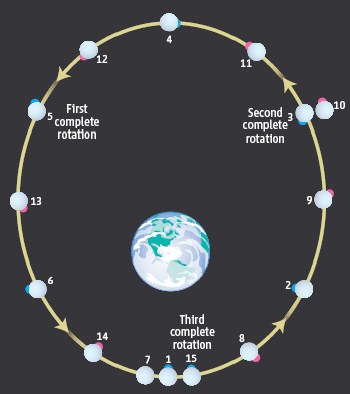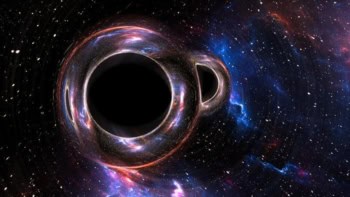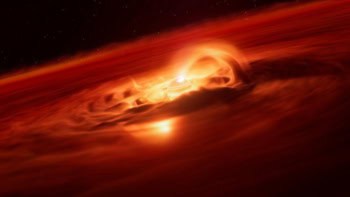Planetary scientists have proposed a solution to the centuries-old problem of why the Moon’s far side bulges at its equator. Ian Garrick-Bethell and colleagues at the Massachusetts Institute of Technology say that the bulge was caused by the Moon being much closer to the Earth early on its history and moving in a much more eccentric elliptical orbit than it does now. This would have allowed the bulge to "freeze in" as the still-molten Moon began to solidify, the researchers say (Science 313 652).

The Moon’s orbit is fiendishly difficult to explain, moving as it does around a rotating Earth, which together form a “double-planet” system that orbits around the Sun. It is a classic example of a three-dimensional, gravitational three-body problem. The Moon’s peculiar bulge — to which the French mathematician Pierre-Simon Laplace first drew attention in 1799 — makes the problem even more complex.
Garrick-Bethell and colleagues now think that the strange bulge can be accounted for if the Moon moved along a very different orbit than it does now (see figure). Based on simple classical mechanics, rather than computer simulations, the MIT team suggest that when the Moon was just 100–200 million years old it was less than 30 Earth radii away, compared to about 60 Earth radii now.
As well as being much closer to Earth, they also believe the Moon had a much more elliptical orbit at that time. They calculate that its “eccentricity” — a measure of how much an ellipse differs from a circle — was 0.61, compared to just 0.05 today. (A circle, in contrast, has an eccentricity of zero.)
Moreover, they believe that the Moon may have been spinning much faster than it is today and behaved a bit like Mercury does today — rotating three times about its own axis for every two revolutions about the Sun (a so-called 3:2 resonance). Now, of course, the Moon spins just once for every revolution around the Earth, which is why we can never see its far side. The team also showed that the bulge can be explained by a 1:1 resonance with an eccentricity of 0.49 and semimajor axis of 22.9 Earth radii.
According to Garrick-Bethell’s team, the proximity of the Moon to the Earth, together with its elliptical orbit, were ideal conditions for the bulge — which was still forming as the Moon cooled — to “freeze” into its present form. This explanation also ties in with the most widely accepted theory of the Moon’s origins, which says it was created when a massive Mars-like object crashed into the Earth. In this theory, the Moon formed at about 4 Earth radii and it has been gradually moving away from us at a rate of about 3.8 cm a year ever since.



